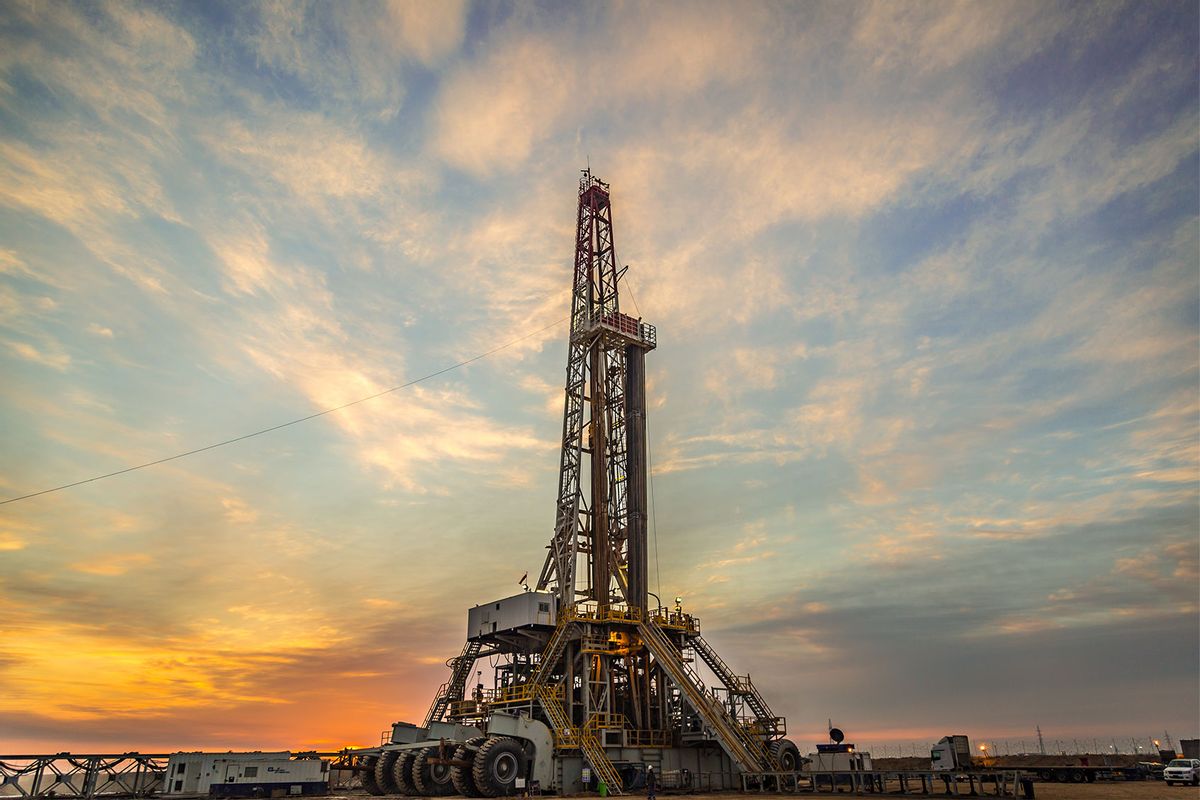Last November the Canadian province of Alberta experienced the largest earthquake in its recorded history. Shortly thereafter a geologist from the University of Calgary claimed that the series of seismic events — which registered a 5.6 on the Richter scale as it rattled homes down to their bones and knocked residents to their knees — told a local publication that the earthquake was "probably natural. Natural events typically occur at those depths."
"Earthquakes of similar magnitude to the Peace River event could be damaging, even deadly, if they happened in more populated areas. It is important that we understand the mechanics involved and how to avoid inducing more of these events."
Now, a seismologist from Stanford University has reached a different conclusion — namely, that the earthquake was caused by wastewater disposal produced by nearby fracking, a controversial drilling method for natural gas and oil that involves injecting liquid at high pressure deep beneath the Earth.
"This event was caused by wastewater disposal," seismologist Ryan Schultz told The Canadian Press on Thursday. The publication reports that there is a deep disposal well near the earthquake site. At that location, businessmen use oil patch techniques including injecting wastewater miles under the ground for fracking, and these methods can indeed induce earthquakes. This particular site has already had more than one million cubic meters of wastewater injected beneath the Earth's surface.
"The clusters of earthquakes were right on top of a deep disposal well," Schultz told the publication, referring to a paper published in the journal Geophysical Research Letters that he co-authored with scientists at the University of Alberta as well as Natural Resources Canada. The new study argues that the injected water, which wound up being forced into a deep fault under the Earth's surface, reduced enough of the friction holding the two sides together that slippage eventually occurred, shaking the surface.
"We had a confidence somewhere between 89 and 97 per cent just in the timing," Schultz explained. "There is enough information to start making these kinds of links."
Want more health and science stories in your inbox? Subscribe to Salon's weekly newsletter The Vulgar Scientist.
Co-author William Ellsworth, a research professor of geophysics and co-director of the Stanford Center for Induced and Triggered Seismicity, said in a statement that "the Peace River earthquake caught our interest because it occurred in an unusual place. Multiple lines of compelling evidence point to this quake as being man-made."
Perhaps the most compelling evidence is that which can be seen by the naked eye. According to a public statement regarding the study, satellite observations picked up "a dramatic 3.4-centimeter uplift in the ground at the time of the November quake," one was produced as the "high volume of disposed wastewater had increased water pressure on the fault, weakened it, and made it prone to slip."
Schultz even offered an ominous prediction: "Earthquakes of similar magnitude to the Peace River event could be damaging, even deadly, if they happened in more populated areas. It is important that we understand the mechanics involved and how to avoid inducing more of these events."
The revelation has implications for climate change. One popular proposal for mitigating the effects of carbon pollution is to capture carbon dioxide waste and pump it deep underground. The theory is that, in so doing, industries can continue to engage in practices that produce this type of waste without harming the environment. Yet if carbon capture and storage triggers the same seismic dynamics as the wastewater from fracking, there could indeed be harm through that method.
"If carbon capture is going to be done at a scale that is going to combat climate change, then significant amounts of volume need to be put in the ground," Schultz explained. "You might expect then also getting these types of earthquakes the more volume that you store."
In November Rebecca Salvage of the University of Calgary working with the Alberta Geological Survey argued that the earthquake began at least six kilometers underground and was therefore likely too deep to have been artificially caused.
"The depth infers that it's probably natural. Natural events typically occur at those depths," Salvage said at the time.



Shares